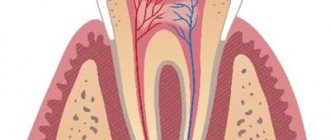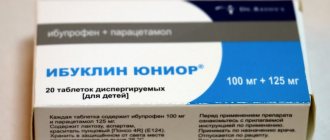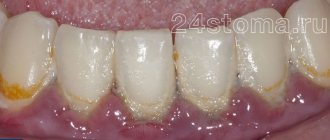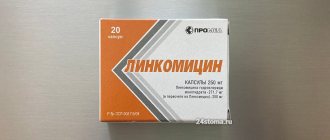To help the body cope with the inflammatory process, anti-inflammatory drugs are prescribed. They are also called non-steroidal or non-hormonal. The short name is NSAID. The first known anti-inflammatory drug is Aspirin or acetylsalicylic acid.
Such drugs have many side effects, so their uncontrolled use is not permissible. Classic NSAIDs have side effects on the digestive organs, cardiovascular and nervous systems.
New generation non-steroidal anti-inflammatory drugs simultaneously have anti-inflammatory, analgesic and antipyretic effects.
How and why does the inflammatory process occur in the human body?
Inflammation is the body's defense method, allowing it to eliminate germs, harmful substances and dead cells. The inflammatory process can begin due to many reasons, including infections caused by bacteria and viruses, the action of chemicals, and also as a result of foreign bodies entering the body.
Inflammation can be acute or chronic. In the chronic form it occurs more slowly and for a long time. The main symptoms of the inflammatory process are redness, swelling, pain, fever and loss of certain functions.
Diagnosis
Before making preliminary conclusions and making a diagnosis, the gynecologist will collect an anamnesis. Diagnosis of inflammation of the appendages is valuable, but the doctor will prescribe treatment only after clarifying the degree of damage to the body and identifying the causative agent of the disease. Adnexitis is one of the diseases of the genital area that requires instrumental intervention for diagnosis.
First, the doctor conducts a clinical examination of the patient in a gynecological chair. The exact picture of the disease does not always become clear, so the gynecologist prescribes ultrasound diagnostics. The procedure will reveal changes in the genital organs, as well as confirm the presence of inflammation in the body. It is extremely rare for a specialist to prescribe an MRI. Typically, the diagnostic method is used when cancer is suspected.
A mandatory step in making a diagnosis is taking tests. They help determine the exact type of causative agent of the disease. The doctor prescribes:
- bioseeding;
- PCR;
- examination of a smear under a microscope.
The biomaterial is the patient’s vaginal secretions or blood. Rarely is an oral sample used for testing. A general blood test will confirm the presence of inflammation in the body, but will not determine the strain of pathogenic microorganisms.
Indications for the use of anti-inflammatory drugs
- Rheumatic diseases (rheumatic fever, ankylosing spondylitis, rheumatoid, gouty and psoriatic arthritis, Reiter's syndrome).
- Non-rheumatic diseases of the musculoskeletal system (myositis, tendovaginitis, household and sports injuries, osteoarthritis).
- Neurological diseases (sciatica, neuralgia, lumbago, sciatica).
- Renal and hepatic colic.
- Pain syndrome of various origins, including abdominal pain, headache and toothache, pain after surgery.
- Fever.
- Dysmenorrhea.
- For the prevention of arterial thrombosis.
Adjuvant pain therapy – what is it?
The most important thing in the treatment of any disease is to eliminate not the symptoms of the disease, but the causes of its development. However, not all diseases require etiotropic therapy, for example, cancer and autoimmune diseases. That is why in medicine and pharmacology there are drugs for the pathophysiological and symptomatic treatment of diseases.
Depending on the intensity of pain, the doctor prescribes patients either narcotic medications or non-steroidal anti-inflammatory drugs. To increase the chances of treatment success, various combinations are used, but often the analgesic effect of the drugs is reduced.
Adjuvant therapy is the treatment of diseases using medications that take into account their symptoms, for example, glucocorticosteroids. These highly effective drugs can affect several symptoms of the disease at once, as well as eliminate possible negative consequences for the body and reduce the level of pain. This helps specialists control and more accurately calculate the dose of pain medications, minimizing side effects.
In the treatment of chronic pain syndrome, a fairly wide range of drugs is used, including steroidal anti-inflammatory drugs and many other medications. Depending on the type of pain, its location and clinical picture, doctors use both anti-inflammatory steroid drugs and painkillers, anticonvulsants, antispasmodics and even antidepressants.
Quite often, steroidal anti-inflammatory drugs are used to treat joints, the list of them is quite wide.
Do you want to know about the cost of services?
8 call our specialist
What are the contraindications?
- Ulcerative lesions of the gastrointestinal tract in the acute stage.
- Severe renal and liver dysfunction.
- Individual intolerance to the main active ingredient and auxiliary ingredients.
- Pregnancy and lactation.
- Individual intolerance to drug components.
- Children under 2 years old.
Anti-inflammatory drugs should be prescribed with caution to people suffering from bronchial asthma, as well as people who have already experienced adverse reactions when taking medications. For patients with arterial hypertension or heart failure, NSAIDs are chosen that have the least effect on renal blood flow. Elderly people are prescribed the minimum effective doses of NSAIDs in short courses.
pharmachologic effect
Anti-inflammatory drugs inhibit inflammation by blocking enzymes that are involved in the formation of special inflammatory factors - prostaglandins: glucocorticosteroids inhibit the enzyme phospholipase A2, non-steroidal anti-inflammatory drugs - the enzyme cyclooxygenase-2.
Glucocorticoids additionally have an antiallergic, immunosuppressive (immunosuppressive) effect, increase blood pressure (anti-shock effect), and activate the liver’s ability to neutralize toxins (antitoxic effect).
In addition to their anti-inflammatory effect, non-steroidal anti-inflammatory drugs also have the ability to reduce pain (analgesic effect) and reduce elevated body temperature (antipyretic effect).
Antirheumatic drugs have an anti-inflammatory and immunosuppressive effect due to inhibition of the formation of specific signaling molecules responsible for the implementation of inflammation - cytokines: tumor necrosis factor-α, interleukin-1 receptors.
Types of anti-inflammatory drugs
Modern medications cope with inflammation of any nature and have a long-lasting effect. They are often prescribed when pain needs to be relieved.
- Hormonal drugs . They have a much stronger effect than non-hormonal ones. The basis of such drugs is cortisol. They act on the principle of local immune suppression. And at the same time, such drugs have many more contraindications and side effects.
They are prescribed for severe skin allergies, rheumatoid arthritis, vascular inflammation, hepatitis, and inflammation of skeletal muscles.
- Combined means . These medications include combinations of several components. Thanks to this, the therapeutic effect is greatly increased.
- Nonsteroidal drugs . These drugs act selectively on types of cyclooxygenase, inhibiting their activity. COX is responsible for the creation of biologically active components. Due to the suppression of COX activity, the amount of these substances in tissues decreases and inflammation disappears.
What non-steroidal anti-inflammatory drugs are most often prescribed for arthrosis?
- Aspirin is indicated in the initial stages of treatment of arthrosis and osteoarthritis, however, patients with diseases of the heart, blood vessels and gastrointestinal tract require special caution.
- Diclofenac - in tablets or ointment form.
- Ibuprofen is one of the most common medications that is easier to tolerate by the body than others.
- Indomethacin - attractive at an affordable price, relieves pain well, but it has many contraindications.
- Ketoprofen - in the form of tablets, injections, ointments, aerosols, gels, suppositories and even a preparation for applications.
- Movalis is less toxic to the gastrointestinal tract than many others, but is contraindicated in patients with diseases of the cardiovascular system.
- Nimesulide – copes with pain and inflammation, and also helps stop the destruction of joints.
- Etoricoxib requires strict adherence to the dosage, otherwise complications from the heart and blood vessels are possible.
There are a lot of drugs in the NSAID group: they must be prescribed by a doctor
How to take anti-inflammatory medications correctly?
First you need to carefully read the instructions. The drugs must be prescribed by the attending physician and the optimal dose and course of treatment determined. To protect the stomach, tablets should be taken with a sufficient amount of clean water.
Under no circumstances should you mix medications with alcohol. This will further affect the functioning of the stomach.
You can buy all drugs for the treatment of inflammatory processes in the network of state pharmacies “Provincial Pharmacies”. We provide medicines with a state quality guarantee. There is a pick-up system and home delivery when ordering drugs online.
What you need to remember when taking an NSAID drug
Medicines in this category have a fairly quick pain-relieving effect, so many patients do not deny themselves an “extra pill.” In fact, this approach is very dangerous, since an overdose is fraught with serious complications. Therefore, doctors strongly recommend:
- take such medications only as prescribed by a doctor and in the dosage indicated by him;
- do not combine the use of several drugs from this group at once;
- take medications only with water, since tea, coffee, juice or milk distort the effect of the drug;
- do not self-medicate.
Simultaneous use of non-steroidal drugs and alcohol is incompatible and life-threatening
Treatment with anti-inflammatory drugs alone is ineffective. This is only part of complex therapy for age-related or post-traumatic arthrosis. To restore joint mobility, it is necessary to undergo a course of intra-articular injections, for example, Noltrex, to eliminate the deficiency of synovial fluid in the joint capsule and stop painful friction of cartilage. In some cases, long-term use of chondroprotectors, physiotherapy and other therapeutic methods are indicated. Only an integrated approach will bring results.
Side effects during long-term treatment with high doses of GC
In conclusion, I would like to add that in the fight against chronic pain syndrome, which accompanies many diseases, steroid analgesics help indirectly and are only part of the therapy. It is important that the drug, dosage and duration of the course are selected by the attending physician in accordance with the results of examinations, indications, medical history and the individual characteristics of the patient’s body. It is not recommended to independently adjust the course of treatment to avoid side effects.









